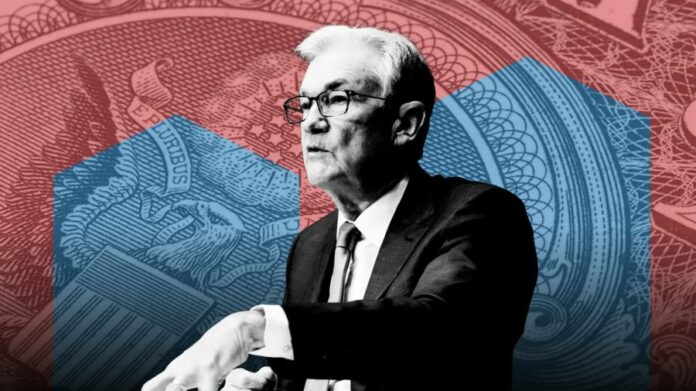The Federal Reserve is expected to this week slow the pace at which it raises interest rates, while signalling that it is not yet close to pausing its historic campaign to tighten monetary policy given persistent inflationary pressures.
After struggling this year to adjust policy fast enough to catch up with inflation, the Federal Open Market Committee is poised at its final gathering of 2022 to end a string of 0.75 percentage point rate rises that began in June. It will instead opt for a half-point move, which would lift the federal funds rate to a range of 4.25 per cent and 4.5 per cent.
The Fed’s message is that a slower pace of rate rises does not mean it is less committed to getting inflation down to 2 per cent. Officials on Wednesday will signal yet more monetary tightening next year, and again emphasise the need to keep rates at an elevated level for an extended period.
“You will hear them say: ‘it’s not time to relax’,” said Karen Dynan, a former senior Fed staffer who previously served as assistant secretary for economic policy at the Treasury department. “We’ve just seen again and again and again that people are very optimistic about what it is going to take to wring out this inflation.”
Fed officials will fortify their message on Wednesday with a new set of economic projections, which will detail their individual views on the fed funds rate, economic growth, unemployment and inflation through 2025.
Jay Powell, the chair, has already conceded that the 4.6 per cent peak policy rate pencilled in three months ago — the last time the forecasts were published — will need to be raised “somewhat higher” owing to signs that the economy retains too much momentum. Financial conditions have also eased in recent weeks — as risky assets have rallied and borrowing costs have ebbed — counteracting the policy tightening the Fed has already put in train.
Now, members of the FOMC and other regional presidents are likely to show the policy rate topping out between 4.75 per cent and 5.25 per cent and for that level to be maintained throughout 2023 as core inflation remains stubbornly high at about 3 per cent.
Many Fed watchers expect the “dot plot” of individual interest rate expectations to indicate a majority in favour of the policy rate peaking just above 5 per cent, with a cohort pencilling in a so-called terminal rate just below that level.
Accounting for the difference are nascent divisions among officials about how much more restraint is required to bring inflation down to where they want it to be.
“The Fed is getting closer to an appropriate policy setting in my view, which means that we are entering a phase that involves smaller changes and more careful calibration of policy,” said Brian Sack, director of global economics for the DE Shaw group and a former senior Fed official.
Some officials, such as vice-chair Lael Brainard and outgoing president Charles Evans of Chicago, have warned about the Fed overdoing it in terms of monetary tightening, arguing that inflation will moderate swiftly as supply-related distortions fade further and home prices extend their rapid descent.
Others, like Cleveland’s Loretta Mester and governor Christopher Waller, remain chiefly worried about the Fed yet again underestimating the extent of the inflation problem, especially as it relates to wage pressures stemming from a resilient labour market.
Matthew Luzzetti, chief US economist at Deutsche Bank, cautioned that a dovish rate forecast for 2023, which he characterised as a 4.9 per cent terminal rate, could limit the Fed’s options at a time when it needs to retain as much flexibility as possible given the uncertain outlook.
“A 4.9 per cent rate would suggest they pause in March, and I don’t think that they’re highly confident that will be the timing,” he said. “Delivering a terminal rate in the dot plot that’s a bit higher would be helpful from a communications perspective.”
Traders in fed funds futures markets are still betting that the Fed will abruptly change tack next year and slash interest rates by December — a view Marc Giannoni, who formerly worked at the Fed’s regional banks in Dallas and New York, expects officials to counter by holding off on forecasting any cuts until 2024.
Any wavering on that point “runs the risk of loosening financial conditions more quickly than they would like,” warned Giannoni, now at Barclays.
Powell has acknowledged that the higher rates rise and the longer they stay there the narrower the path to a “soft landing”, whereby inflation reverts to 2 per cent without a recession.
Although the chair still contends that that outcome is plausible — and officials’ forecasts are expected to reflect the same even as they lower their growth estimates and raise their unemployment predictions — Fed staffers conceded last month that a recession was “almost as likely” as avoiding one.
In a recent joint survey conducted by the Financial Times, 85 per cent of the economists polled forecast a recession next year. In the event of a contraction, the unemployment rate would eclipse 5.5 per cent, a majority reckoned, well above the current 3.7 per cent level.






